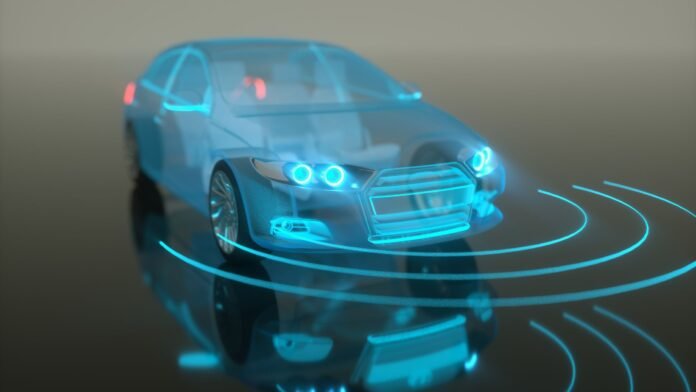Cruise: The Pioneering Journey to Reshape Urban Mobility with Self-Driving Cars
In the ambitious race to revolutionize transportation, few companies have captivated the imagination and faced as many formidable challenges as Cruise. Founded with the bold vision of making self-driving cars a safe, reliable, and accessible reality, Cruise has been at the forefront of the autonomous vehicle industry, striving to transform urban mobility and improve road safety. From its early days as a Y Combinator-backed startup to becoming a significant player under the General Motors umbrella, Cruise’s journey offers profound lessons for founders navigating high-stakes, capital-intensive industries.
The Minds Behind the Wheel: Kyle Vogt and Daniel Kan’s Vision
Cruise was co-founded in 2013 by Kyle Vogt and Daniel Kan, two entrepreneurs with a shared belief in the transformative power of autonomous technology. Kyle Vogt, a serial entrepreneur known for co-founding Twitch (acquired by Amazon), brought a deep technical prowess and a relentless drive for innovation. Daniel Kan, with a background in building successful ventures like Exec, complemented this with a strong operational and strategic mind.
Their initial insight was to develop a highway autopilot system, but their vision quickly evolved into something far more ambitious: a fully autonomous ride-hailing service. This audacious goal meant tackling some of the most complex engineering and regulatory challenges imaginable, pushing the boundaries of artificial intelligence, sensor fusion, and real-time decision-making in unpredictable urban environments.
The Long and Winding Road: Early Challenges and Strategic Pivots
The journey for Cruise, like any pioneering deep-tech startup, was fraught with significant hurdles. In its nascent stages, Cruise faced:
- Immense Technical Complexity: Building a reliable self-driving system from the ground up required solving problems related to perception (identifying objects and their movements), prediction (forecasting other road users’ intentions), and planning (navigating safely and efficiently). This involved advanced computer vision, LiDAR, radar, and intricate software algorithms.
- Data Scarcity and Annotation: Training AI models for autonomous driving demands vast amounts of high-quality, real-world data. Collecting, labeling, and processing this data was an monumental task, especially for the myriad “edge cases” encountered in dense urban settings like San Francisco.
- Regulatory Uncertainty: The regulatory landscape for autonomous vehicles was, and largely still is, nascent and highly fragmented. Securing permits for testing and commercial operation in different cities and states presented a constantly evolving challenge.
- Public Skepticism and Trust: Beyond the technology, Cruise had to contend with public apprehension about driverless cars, particularly after incidents involving autonomous vehicles across the industry. Building trust and demonstrating unassailable safety became paramount.
A significant turning point came in 2016 when General Motors acquired Cruise for over $1 billion. This acquisition provided Cruise with access to substantial capital, manufacturing capabilities, and automotive expertise, accelerating its development and deployment efforts. It allowed Cruise to move beyond retrofitting existing vehicles to designing purpose-built autonomous vehicles like the Cruise Origin.
Cruise’s Core Innovation: Integrated Hardware and Software for Urban Autonomy
Cruise’s mission has consistently been to create advanced autonomous driving technology that reduces accidents, eases congestion, and provides a sustainable transport solution. Their approach has been characterized by:
- End-to-End Development: Unlike some competitors who focused solely on software, Cruise adopted an integrated approach, developing both the hardware and software for its autonomous vehicles. This ensured seamless compatibility and optimized performance, moving from retrofitted cars to designing fully autonomous vehicles from scratch.
- Focus on Urban Environments: While challenging, Cruise specifically targeted complex urban environments like San Francisco. This deliberate choice meant tackling diverse traffic scenarios, unpredictable pedestrian behavior, and intricate road layouts, believing that mastery in such conditions would prove their technology’s robustness.
- Safety-First Redundancy: Recognizing the critical nature of autonomous operation, Cruise prioritized safety by building multiple layers of redundancy into its systems, including backup systems for critical functions and rigorous testing protocols, both in simulation and on public roads.
- Data-Driven Continuous Improvement: Their systems were designed to continuously learn from real-world driving data, feeding insights back into algorithm refinement and model training, aiming for an ever-improving and safer autonomous experience.
Lessons from the Driverless Frontier for Founders
The Cruise journey, particularly its recent restructuring and shift in strategy, offers several critical lessons for startup founders:
- Deep Pockets are Essential for Deep Tech: Developing truly transformative deep technology like autonomous vehicles requires enormous capital and a long runway. Founders in such spaces must be prepared for extensive fundraising and potentially consider strategic partnerships or acquisitions early on.
- Safety is Non-Negotiable: In industries with direct public safety implications, a single incident can have catastrophic consequences, not just for the company but for the entire sector. Prioritizing safety, transparency, and a robust safety culture is paramount.
- Regulatory Hurdles are Real and Dynamic: Founders must engage proactively with regulators, understand the evolving legal landscape, and be prepared for potential setbacks or changes in operational permissions.
- Market Readiness vs. Technical Capability: Even with advanced technology, market acceptance and a clear path to scalable, profitable operations are crucial. The economic viability of a groundbreaking technology needs to align with its technical maturity.
- Adaptability is Key: The autonomous vehicle industry is a marathon, not a sprint. Companies that can adapt their strategies in response to technological advancements, market feedback, and regulatory changes are more likely to endure.
The Road Ahead: Evolving Towards a Safer, Smarter Future
While Cruise has faced significant challenges and undergone strategic shifts, its pioneering efforts have undeniably contributed to the advancement of autonomous vehicle technology. The insights gained from their extensive testing and real-world operations will continue to inform the development of safer and more efficient transportation systems. The future of urban mobility remains a vibrant area of innovation, and the lessons from Cruise’s journey will undoubtedly steer the next generation of founders toward building a smarter, more connected world.
Are you a startup founder or innovator with a story to tell? We want to hear from you! Submit Your Startup to be featured on Taalk.com.








